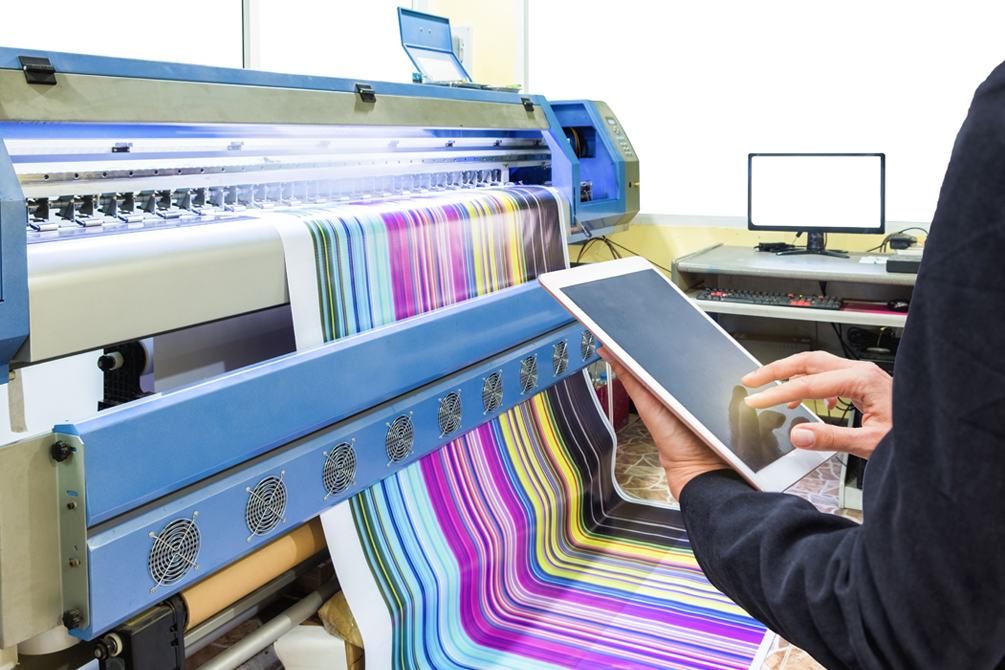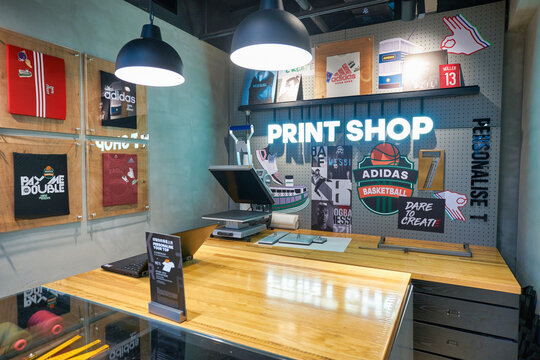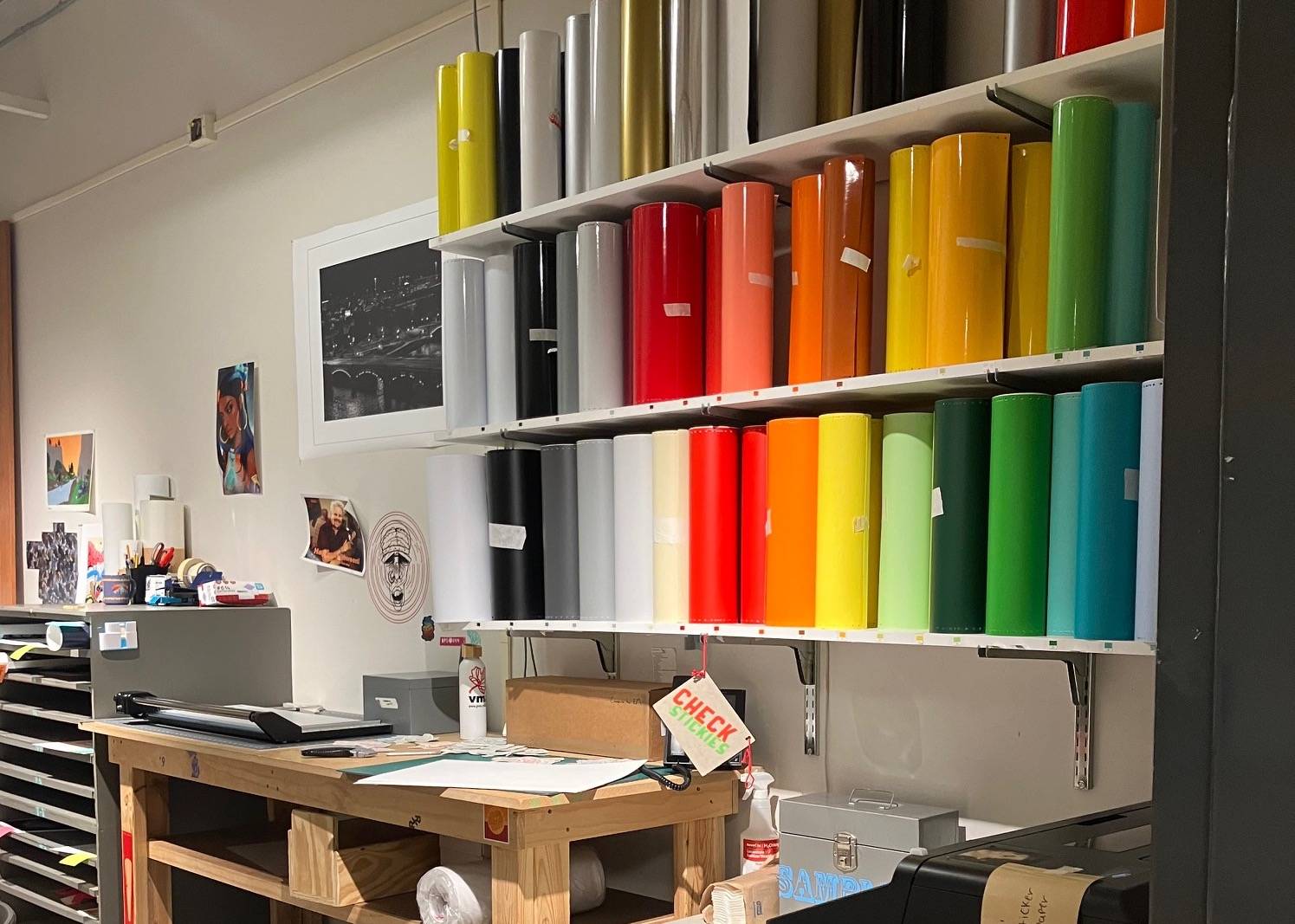3 Types of Printing Every Print Shop Near Me Should Offer
3 Types of Printing Every Print Shop Near Me Should Offer
Blog Article
The Ultimate Guide to Utilizing Printing Providers for Personalized Art Prints
Guiding via the world of custom art prints needs a clear understanding of different printing services. Musicians should take into consideration elements such as printing methods and materials to achieve the wanted outcome. Each choice, from artwork prep work to color calibration, plays an important function in the last product. As they explore these elements, musicians can reveal the capacity for their job to connect with target markets in a purposeful method. What actions can they take to assure their prints attract attention?
Recognizing Various Types of Printing Providers
Several individuals may overlook the complexities of printing solutions, recognizing the numerous types readily available is crucial for any individual looking to produce custom art prints. The most common types include electronic printing, offset printing, and display printing. Digital printing is preferred for its quick turnaround and capacity to generate premium photos directly from digital documents, making it perfect for little runs. In contrast, offset printing deals superior image top quality and is economical for larger quantities, using plates to move ink onto paper. Screen printing, often utilized for textiles and marketing things, entails pressing ink via a mesh display, enabling vibrant colors and textures. Each technique has its one-of-a-kind advantages and limitations, making it important for artists and designers to assess their certain needs, such as quantity, desired high quality, and spending plan, prior to selecting a printing service that straightens with their creative vision.
Selecting the Right Materials for Your Prints
Selecting the ideal products is vital for attaining high-quality customized art prints. Understanding the different types of paper and the significance of ink quality can substantially influence the result. Musicians need to consider these elements to guarantee their vision is accurately stood for in the printed item.
Paper Kind Explained
Selecting the ideal paper kind is necessary for attaining the desired aesthetic and toughness in custom art prints. Numerous options exist, each offering distinct features. Shiny paper enhances shade vibrancy and detail, making it ideal for photography prints. Alternatively, matte paper gives a softer coating, which is better for art work that calls for subtlety and structure. Art paper, frequently made from cotton or alpha cellulose, uses archival quality and is ideal for recreating intricate information in paints (Print Shop Near Me). Additionally, specialized documents, such as watercolor or canvas, can include one-of-a-kind aesthetic results. Eventually, selecting the appropriate paper type will considerably affect the final discussion, making certain that the art work is both aesthetically appealing and resilient
Ink Top Quality Issues
Ink quality plays a necessary duty in the general success of personalized art prints. Premium inks guarantee dynamic colors, sharp information, and longevity, which are important for showcasing creative job. When selecting printing solutions, musicians need to think about pigment-based inks over dye-based options, as they provide better fade resistance and color stability. Furthermore, the choice of ink need to complement the selected paper type, improving the print's aesthetic influence. Environmental elements, such as moisture and temperature level, can also impact ink performance; for that reason, artists ought to inquire regarding ink formulations that resist these components. Eventually, buying premium ink quality can boost the final product, guaranteeing that the art print continues to be real to the artist's vision for many years to come.
Discovering Printing Techniques: Digital vs. Typical
While both conventional and electronic printing techniques have their distinct benefits, the decision on which method to make use of commonly pivots on the particular requirements of the art work. Digital printing stands out in adaptability and rate, allowing for fast turn-around times and the capability to print as needed. This technique is specifically useful for musicians that require small runs or distinct pieces, as it removes the demand for extensive arrangement processes.Conversely, conventional printing strategies, such as lithography and screen printing, commonly produce richer appearances and colors, appealing to musicians looking for a more tactile and genuine finish. These techniques can improve the depth and quality of the art work, making them suitable for larger editions. Additionally, standard techniques might offer an unique aesthetic that digital printing occasionally battles to duplicate. Inevitably, the option between these methods need to consider elements like desired quality, amount, and artistic intent, leading musicians to the most ideal alternative for their tasks.

Preparing Your Artwork for Printing
Effectively preparing artwork for printing calls for mindful attention to detail, no matter the chosen printing strategy. Musicians have to ensure that their data are created at the suitable resolution, typically 300 DPI, to preserve intensity and clarity. The right color mode, normally CMYK for print, is crucial to accomplish the preferred shade precision. Artists should additionally take into consideration the measurements of the art work, seeing to it to consist of bleed locations if required, to protect against any type of unwanted white sides after trimming.Additionally, documents formats play use this link a crucial duty; TIFF and PDF are usually liked for top quality prints. Prior to submission, it is very important to evaluate the artwork for any type of imperfections or undesirable aspects. By carefully checking these aspects, musicians can boost the likelihood of their prints aligning with their imaginative vision, eventually resulting in a successful printing result.
The Relevance of Shade Calibration and Proofing
Shade calibration and proofing are necessary action in the printing process, as they guarantee that the final result accurately shows the musician's vision. Proper shade calibration warranties that the colors showed on the screen suit those that will certainly be published. This process entails adjusting the monitor settings, printer accounts, and inks to attain a consistent shade representation.Additionally, proofing enables artists to sneak peek their work prior to the final print run. This phase enables them to identify and fix any disparities in color, information, or saturation, therefore decreasing expensive mistakes. By using hard-copy or digital proofs, musicians can make educated choices about modifications required for suitable results.Incorporating shade calibration and proofing right into the printing operations not only improves the high quality of the end product but additionally promotes a trustworthy collaboration between the printing and the musician service, ensuring contentment and integrity to the original art work.
Picking the Perfect Dimension and Style for Your Prints

Marketing and Selling Your Personalized Art Prints
Marketing and marketing customized art prints needs a solid brand identity to stand apart in a competitive market. Effective on the internet promotion approaches and the strategic use social media sites systems can considerably boost exposure and involvement. By incorporating these aspects, musicians can produce a compelling presence that draws in potential purchasers.
Structure Your Brand Identity
Developing a strong brand identity is essential for artists seeking to efficiently market and sell their personalized art prints. This identity includes the artist's unique style, values, and story, which resonate with potential buyers. Musicians should develop a natural visual existence throughout all platforms, including logos, shade schemes, and typography that show their creative vision. In addition, a clear mission declaration helps interact the artist's purpose and passion. Engaging storytelling about the inspiration behind each item can foster emotional links with the audience. Uniformity in messaging, whether on social networks or product packaging, improves recognition and trust. By very carefully curating their brand identity, musicians can distinguish themselves in an affordable market, bring in devoted customers who appreciate their artistry.
Efficient Online Promo Approaches
What techniques can musicians use to successfully advertise their personalized art publishes online? Creating a specialist site showcasing the artwork is vital. This website ought to include thorough summaries and high-quality pictures to engage prospective purchasers. Furthermore, musicians can utilize email advertising by developing a subscriber listing to share updates, promos, and brand-new releases. Teaming up with blog writers and influencers in the art area can expand reach and integrity. Providing limited-time discount rates or exclusive items can likewise create necessity, motivating acquisitions. In addition, maximizing content for internet search engine through pertinent search phrases will boost visibility. Keeping a blog about the creative process can draw in art lovers, promoting a deeper connection with the target market and improving the total advertising method.
Utilizing Social Media Site Operatings Systems
Social media site systems serve as effective devices for musicians looking to market and sell their custom art prints. By leveraging systems like Instagram, Facebook, and like this Pinterest, artists can showcase their job to a substantial audience. Involving visuals and tactical hashtags can enhance visibility, drawing prospective buyers to their accounts. Regularly posting content, such as new styles or behind-the-scenes processes, helps maintain audience interest and cultivates a feeling of area. In addition, musicians can make use of targeted advertising to reach certain demographics, boosting the chances of sales. Collaborations with influencers or other musicians can further magnify exposure. Inevitably, a well-curated social media visibility not just promotes customized art prints however also builds a faithful client base in time.
Frequently Asked Inquiries

Just how Do I Locate Trusted Printing Expert?
To find trusted printing solution suppliers, one need to look into on-line reviews, seek recommendations from peers, contrast profiles, request samples, and analyze customer care responsiveness. This complete approach assurances notified decisions and sufficient end results.
What Is the Common Turn-around Time for Custom-made Prints?
The typical turnaround time for custom prints varies by service provider, yet normally ranges from a couple of days to two weeks. Aspects influencing this consist of order size, complexity, and the certain printing techniques used.
Can I Obtain a Refund if I'm Not Completely satisfied With My Prints?
The concern of getting a reimbursement for unsuitable prints usually depends upon the certain printing solution's plans. Many business use satisfaction assurances, while others might have rigorous return problems, stressing the significance of examining terms ahead of time.
Are There Any Type Of Hidden Prices Related To Printing Solutions?
Several printing services may consist of hidden expenses such as arrangement fees, delivery charges, or added fees for particular products. It's important for customers to inquire about all potential expenses before completing their order.
Exactly How Can I Ensure My Prints Are Ecologically Pleasant?
To ensure prints are ecologically pleasant, one need to pick environment-friendly inks, recycled paper, and lasting printing Recommended Reading practices. Investigating printing services that focus on sustainability and acquiring qualifications can better ensure marginal ecological impact in the printing process. Guiding via the globe of personalized art prints calls for a clear understanding of numerous printing solutions. Many people may neglect the ins and outs of printing solutions, recognizing the numerous kinds available is crucial for anyone looking to develop customized art prints. The most common kinds include electronic printing, counter printing, and screen printing. Successfully preparing art work for printing needs mindful interest to information, no matter of the chosen printing method. Prints aimed at galleries may require typical sizes to facilitate framework, whereas distinct formats may appeal to enthusiasts looking for something distinctive.Lastly, the printing solution's capabilities need to be assessed.
Report this page